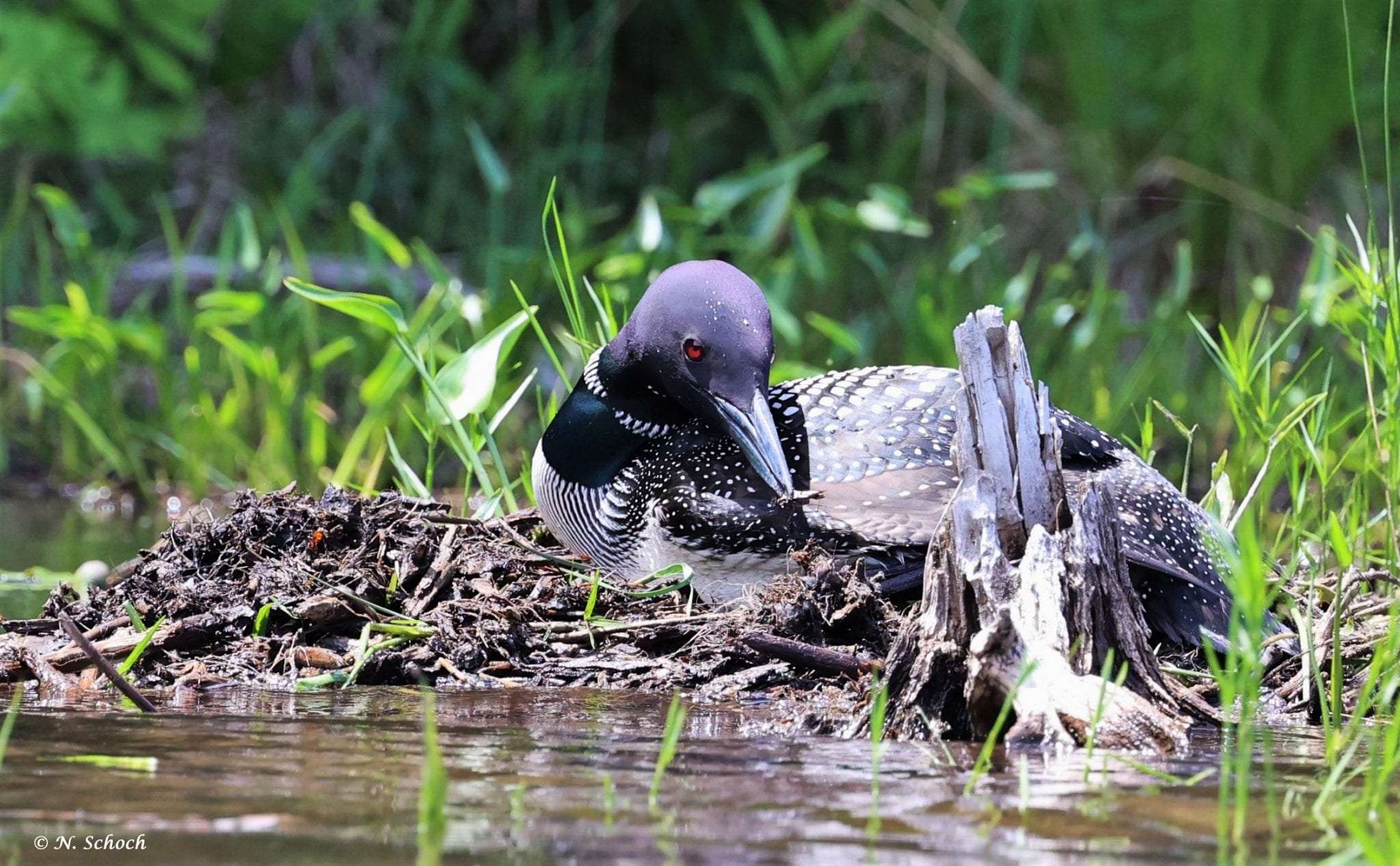
By Gwendolyn Craig
Nearly $800,000 in settlement money from a 2003 oil spill that killed loons wintering in a New England bay is going to the Adirondack Center for Loon Conservation.
The money will be allocated over five years and will help the center with its rescue and rehabbing efforts. Executive Director Nina Schoch said she’s planning to buy a motor boat, for one thing. The center has a canoe to get to injured and distressed loons. It also relies on borrowing a volunteer’s motor boat. Funds will also kickstart the center’s bigger plans for a rehab center, mobile vet clinic and increased educational programs.
The Saranac-Lake-based organization welcomed the U.S. Fish and Wildlife Service funding announcement earlier this month. Schoch advocated to get New York birds and her organization included. Originally, New York was not part of the restoration plan or natural resource damage settlement. Schoch contended that New York loons were likely impacted by the spill. Work that the center does will contribute to restoring the Northeast’s population numbers, she added.
The disaster dates back to April 2003, when a Bouchard Transportation Co. barge spilled more than 98,000 gallons of No. 6 fuel oil, impacting more than 100 miles of Buzzards Bay. The bay spans Massachusetts and Rhode Island. Of the more than 1,100 birds that died, about half were common loons. In past satellite studies, Schoch said Buzzards Bay proved to be a popular overwintering spot for Adirondack loons.
It took state and federal agencies five years to assess the spill impacts. State and federal officials negotiated a natural resource damage assessment with Bouchard by November 2010. In January 2018, Bouchard Transportation was issued a consent decree that included a final restoration plan for common loons and other birds. The draft plan did not include compensation to any organizations working with birds in New York. Schoch and other commenters provided feedback, explaining how New York’s loons overwintered in Buzzards Bay.

Become an Explorer
Join the community of readers who are helping to power independent Adirondack-based reporting you can trust.
Your donation, in any amount, sends a message that nonprofit news matters.
There are about 2,000 adult loons in New York, but Schoch said their reproductive success has dropped. Loons are contending with climate change, lead poisoning and decreased habitat. Considering loons have one or two chicks a year, increasing the population is slow-going compared to say mallard ducks that have a half dozen chicks at one time, Schoch said.
Officials revised the restoration plan to include assistance for New York birds.
USFWS announced the final grantees for the $8.3 million natural resource settlement on June 3. Of that funding, about $2.6 million will go to a Massachusetts-based project to relocate and raise loon chicks. About $3.6 million will go toward increasing the survival of nesting loons across New England and New York, according to a news release.
Besides getting a motor boat, the Adirondack Center for Loon Conservation will use its money to deploy 50 floating rafts that loons can use for nesting, according to a project summary. The center also plans to address lead poisoning of loons and fishing line entanglement. Schoch said when she first started working at the center in 1998, there were one or two loon rescues a year involving fishing line and fishing tackle. Now, she said, there are 10 to 15 rescues a year.
The center will organize a lead tackle buy-back program and a fishing line recycling program in the Adirondack Park. Some loons ingest lead tackle, which poisons them. Schoch is also hoping to purchase radiological equipment so the center can X-ray loons they suspect may have ingested lead tackle.
Though this oil spill funding won’t cover it, Schoch has bigger plans for the center’s rehab capabilities. In the future she would like to have a rehab facility at the State University of New York’s College of Environmental Science and Forestry’s Newcomb campus. The campus has access to private lakes where the public could not disturb the loons. Currently, if a loon needs extensive rehab, Schoch drives it around five hours away to Tuft’s Wildlife Clinic in Massachusetts.
“It would be really nice to have this facility that is in hour drive for me, but central in the park,” Schoch said.
Environmental policy updates
Sign up for Gwen’s weekly “Adirondack Report” newsletter
Or click here to see the full slate of daily and weekly newsletters
"center" - Google News
June 29, 2021 at 05:44PM
https://ift.tt/3w2hy1r
Adirondack loon center awarded oil spill funds - Adirondack Explorer
"center" - Google News
https://ift.tt/3bUHym8
https://ift.tt/2zR6ugj
Bagikan Berita Ini














0 Response to "Adirondack loon center awarded oil spill funds - Adirondack Explorer"
Post a Comment